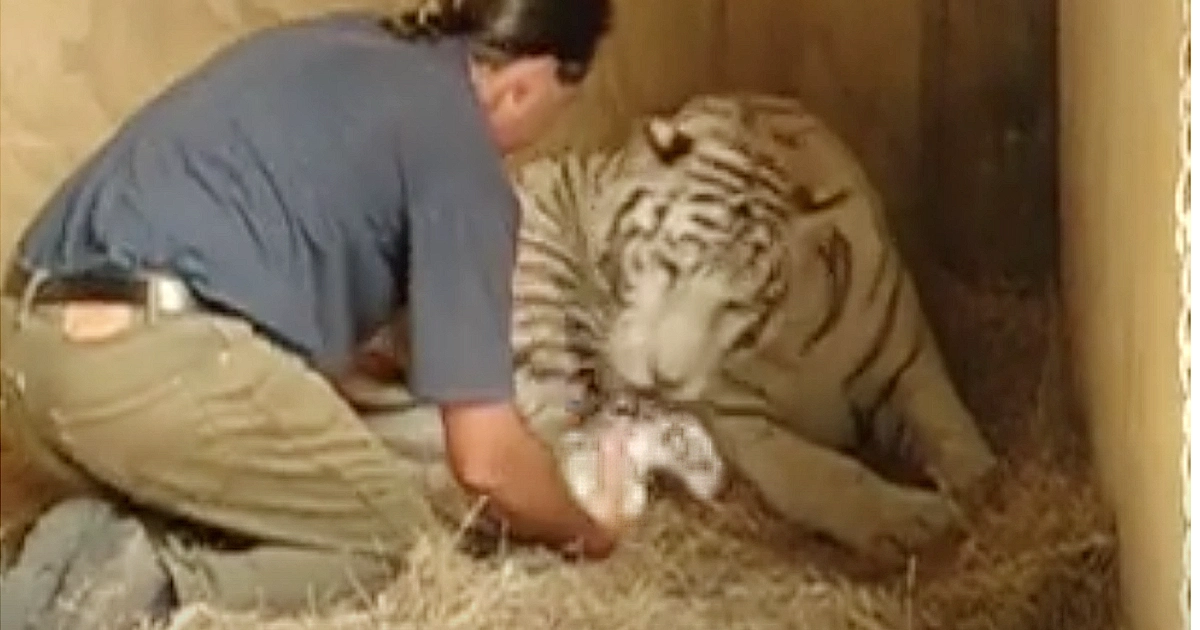
White Bengal tigers, famed for their ghostly beauty, are not a separate species but a genetic variation of the Bengal tiger, born from a rare recessive gene. Their presence in captivity remains uncommon, and breeding them often comes with complications—ranging from genetic health risks to maternal rejection.
At Zion, Busch’s approach was profoundly hands-on and empathetic. By fostering early bonds and using gentle, respectful interaction, he earned enough trust from the tigress to be allowed near her cubs—a rare and intimate privilege. His efforts were captured in the television series The Lion Man (2004–2008), which chronicled his work with big cats, including dramatic moments of surrogate care when cubs were abandoned or rejected.
The trust forged between Busch and the tigress—rooted in patience, mutual understanding, and respect—allowed glimpses into the maternal instincts of a powerful predator, even in the vulnerable days after birth. It’s a testament to what can be achieved when human intervention is guided by compassion rather than control.
Elsewhere, similar moments of wonder and caution unfold. At the Kamla Nehru Zoo in Indore, India, a white tigress named Shivani gave birth to four cubs after mating with a Royal Bengal tiger—a genetic rarity. Yet, unlike Busch’s experience, Shivani fiercely protected her space, refusing to let human caretakers even approach the body of a stillborn cub.
Together, these narratives—from Zion to Indore—reveal the complex, often fragile interplay between human care and wild instinct. They remind us that while trust can grow between species, it is never guaranteed—only nurtured, respected, and, at times, heartbreakingly withheld. In the tapestry of human-animal relationships, such moments are threads of both beauty and humility.


